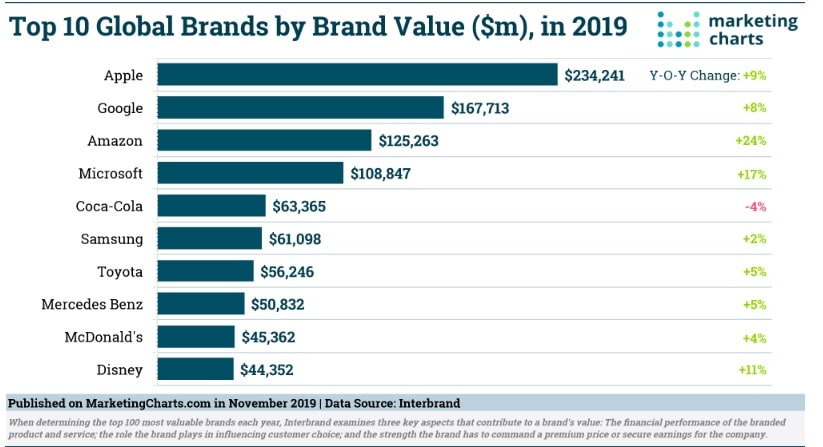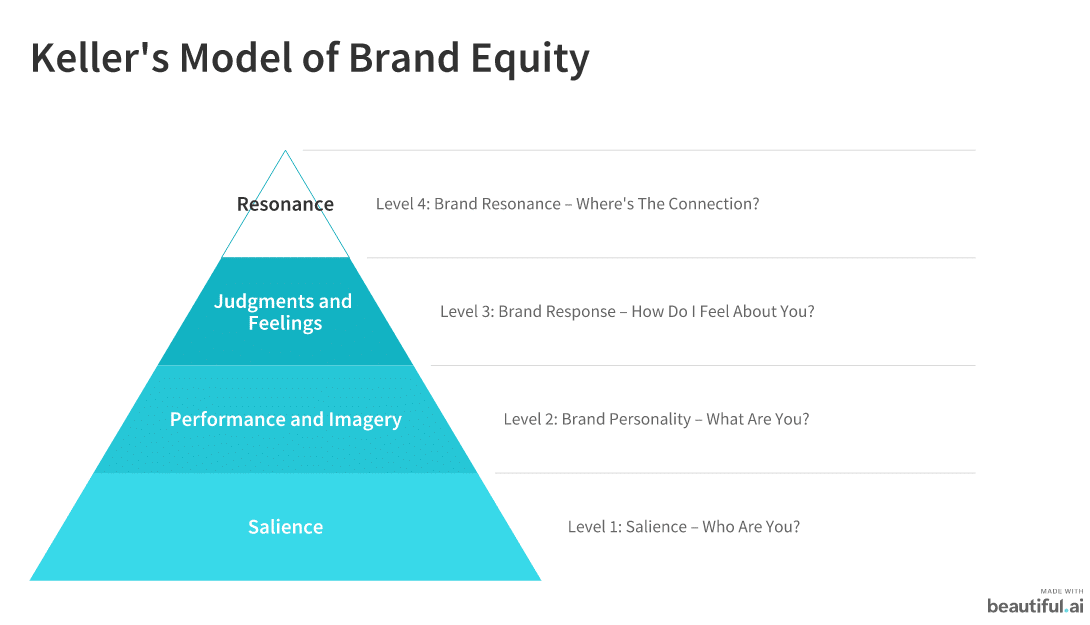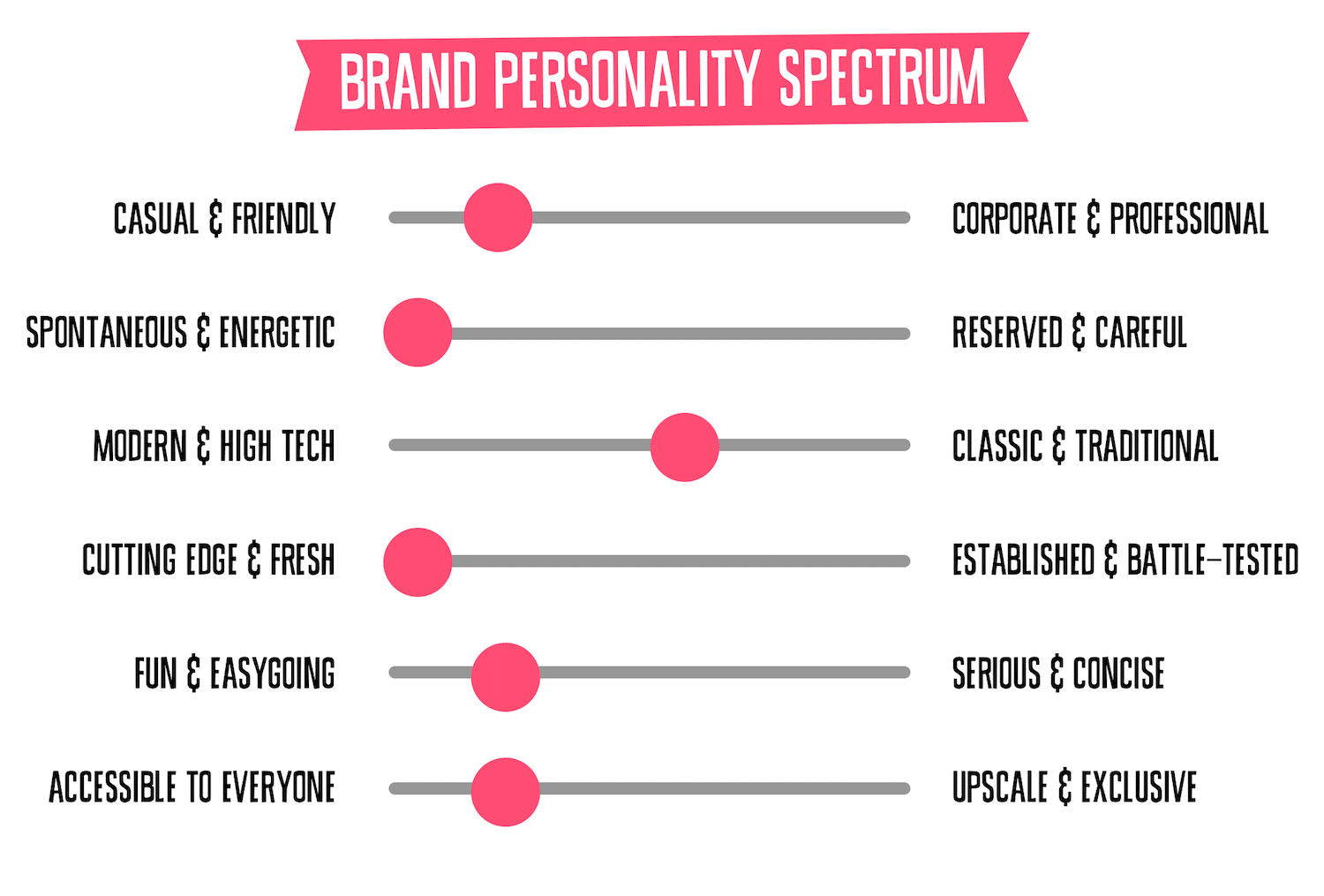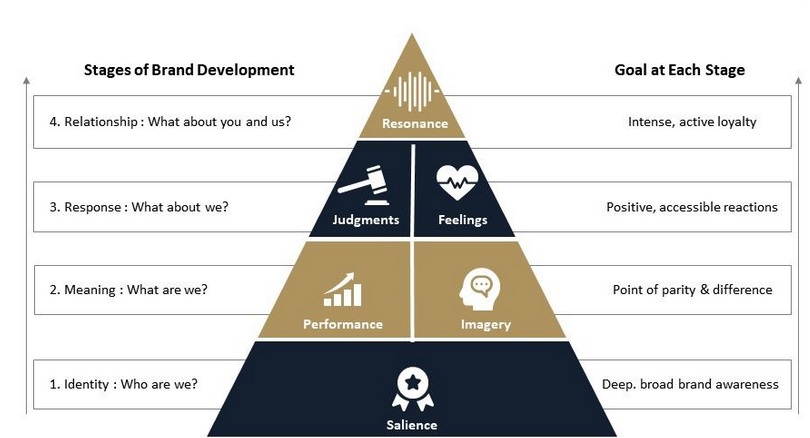There are a lot of things that go into a successful business. While revenue might be one of the main indicators, if you want to become a household name like Nike, Apple, or Instagram, there’s another key factor you should consider – brand equity.
What is brand equity?
You’ve likely heard about this term, but it’s still understandable to wonder what is brand equity? Brand equity is a brand’s perceived value and can be determined by people’s perception of and experience with a brand. If people love your brand and share it with others, it has positive brand equity. If your product constantly disappoints and people tell others to avoid it, it has negative brand equity.
Companies can build brand equity through several channels, such as brand marketing, community, durability, quality, and recognition. Although it sounds simple, it takes time and a lot of work to establish favorable brand equity.
Why is it so valuable?
A brand represents various aspects of a company’s identity, such as name, logo, font, colors, messaging, and packaging used to identify the source of a product. Initial branding was to help customers distinguish the difference between similar products by different manufacturers.
However, with time, the concept of branding grew and developed into something vital for all businesses looking to increase their market share.
Some benefits of brand equity:
- Companies can charge more for the same product.
- Strengthen customer loyalty.
- Provides expansion opportunities – by leveraging the value of your brand, you can easily add new products under the same name.
- Builds trust with the masses and becomes a competitive edge.
Overall, brand equity enhances the ability of your customers to interpret and process information when making a purchase decision and affects the quality of your user’s experience.
How to develop it
Brand equity naturally grows as a direct result of consumers interacting with your brand. Depending on which model you’re looking at, each step of this process might vary but follows the same general flow.
- Brand awareness: Consumers become aware of your brand either through advertising, packaging, or their network.
- Brand recognition: Customers start to become more familiar with your brand and can notice it in stores or while searching the web.
- Trial: After seeing it enough and understanding its purpose, they will start to try your product.
- Preference: Customers will judge your brand on their initial experience with your product and could become a preferred choice.
- Brand loyalty: After continually having a pleasant experience with your brand, customers will start recommending your product to others and often will only buy your product in that category.
4 levels of building equity for your brand
While the concept of brand equity might seem simple, in order to build a strong brand, you must shape how consumers see and feel about your product. You will have to guide users through each level of the process to ensure they have positive thoughts, feelings, and perceptions about your brand.
To highlight each step, we will be examining the Keller Brand Equity Model – which is studied in universities around the world.
The four levels, which are broken up into six building blocks, are meant to represent the fundamental questions that your customer will subconsciously ask about your brand.
Let’s breakdown each level and building block in detail and highlight how you can apply them to strengthen your brand.
Level 1: Developing brand equity with salience – who are you?
It’s difficult to define brand equity without mentioning salience, which refers to your brand’s prominence and if it stands out amongst the competition. It’s the most important level of the pyramid and must be strong enough to support the rest of the stages.
This is how customers perceive your brand and distinguish it from others. You’re not just creating brand awareness in this stage. You’re also trying to re-enforce the correct brand perception at each step of the buying process.
Where to start
Before you can start, you’ll first have to define who your ideal customers are. Research your industry and niche to gain a better understanding of how your customers see your brand. This stage is the perfect time to explore different market segments with different needs to expand your market share.
Next, you will want to identify how your customers decide between you and your competitors’ brands. Ask yourself:
- What’s their decision-making processes when researching and buying your product?
- In what market or category do they place your brand?
- How does your brand stack up against the competition in each step of the decision-making process?
People buy your product to either solve a problem or satisfy some desire – this is your unique selling proposition (USP). I’m sure you’re already familiar with these, but it’s crucial to communicate to your customers how your brand benefits them. The real question is, do your customers understand your USPs for each segment when they’re making a purchase.
By the end of the first step, you should have a clearer understanding of how people perceive your brand. And if there are any specific problems you need to address – either by adjusting your messaging or product/service.
Level 2: Brand personality – what are you?
Level two, identify and communicate what your brand stands for and means. There are two building blocks to this step: performance and imagery.
Performance – is how well your product/service meets your customers’ needs. Performance is usually broken up into five key categories:
- Primary characteristics and main features
- Reliability, serviceability, and durability
- Effectiveness and efficiency
- Style and design
- Price
Imagery – refers to how your brand appears to consumers on a social and psychological level. These perceptions can arise in several ways, either by them using your brand directly, or indirectly through their network or by advertising.
Where to start
The experience your customers have with your brand is a good indicator of your product’s/service’s performance. You must exceed customers’ expectations if you want to build brand loyalty and drive word of mouth.
List out all your customer’s needs and think of ways you can incorporate these solutions into your product.
Next, take a second to think about the kind of experience you want your customers to have with your brand. Identify any obstacles between where you are and where you want to be and start laying out a roadmap to bridge these gaps.
In this stage, don’t be afraid to start tweaking your brand’s personality – get creative and start experimenting with messaging and taglines.
Level 3: Brand response – how do I feel about you?
Once a person buys your brand does your product live up to their expectations? Their responses fall under two categories, which are the building blocks of this level: judgments and feelings.
Your customers are continually judging your brand, and their thoughts can fall into four categories:
- Quality: It can be based on actual or perceived quality.
- Credibility: Falls in three buckets – innovation, likability, and trustworthiness.
- Consideration: How well does your product meet their unique needs?
- Superiority: Customers will likely try and compare other brands.
People will also respond to how your brand makes them feel. Brands can evoke feelings directly and even influence how customers feel about themselves. According to Keller’s Model, there are six positive feelings: excitement, fun, warmth, security, self-respect, and social approval.
Where to start
When examining judgment’s four categories. Ask yourself these questions:
- How can you improve the actual and perceived quality of your brand?
- How can you improve your credibility?
- How well does your messaging communicate your brand’s relevance to people’s needs?
- How well does your brand compare to your competitors?
Next, analyze the six types of feelings listed above. Is your current brand strategy focusing on any of them? What can you do to enhance these sensations or feelings for your customers?
Level 4: Brand resonance – where’s the connection?
Brand resonance sits on top of the pyramid and is the most desirable and challenging level to obtain. Brand resonance can be summed up as the connections between the customer and the brand and the randomness at which they recall your brand in different buying situations.
Building resonance involves a series of steps – which Keller breaks up into four categories:
- Behavioral loyalty: Can be measured by regular, repeat purchases.
- Attitudinal attachment: Your customers love your brand, and they see it as a special purchase.
- Sense of community: Your brand builds a sense of community with people, including other customers and company representatives.
- Active engagement: Often seen as the most important KPI of brand loyalty. Consumers actively engage with your brand even when they are not using it. These activities would include: joining a club, going to events, chatting on online communities, following your brand on social media, or even being an active advocate spreading the word about your brand whenever they get a chance.
Having strong brand resonance can lead to increased customer loyalty and decreased vulnerability to competitors’ marketing tactics. The hardest part for brands is delivering the right kind of brand knowledge and creating a frictionless experience for consumers.
Where to start
Once you’ve reached resonance, you will want to put all your efforts into reinforcing each resonance category. When analyzing your pyramid, ask yourself these questions:
- What can you do to increase behavioral loyalty?
- How can you reward your most loyal advocates?
- How can you foster a sense of community?
- How can you increase customer involvement?
In this brainstorming session, list all the actions you could take to increase your resonance. Think about events, giveaways, promotions, clubs, social groups, and anything else that might help you connect with your audience – this could even be partnering with a charity that your consumer base has a strong connection with to increase your salience.
Examples of positive equity in a brand
How has brand equity been integral to the success of notable brands like Tylenol, Starbucks, and Porsche? Let’s investigate.
Tylenol
Tylenol’s decades of business has enabled them to grow its market with the creations of Tylenol Cold & Flu, Tylenol Sinus Congestion & Pain, and Extra Strength Tylenol. Studies conducted by EquiTrend revealed consumers trust Tylenol over generic brands – even though they have the same ingredients, leading to Tylenol’s increased profit margins.
Starbucks
According to a case study by Starbucks – their customers choose them because of their quality and company culture. Rated as one of the “World’s Most Admired Companies” from 2009-2017 by Fortune magazine. Starbucks is held in high esteem for its Green Sustainability initiative, where they aim to reduce the environmental impact of each store by investing in foreign agriculture and planting trees to replenish rainforests. With over 28,000 storefronts in over 57 countries, Starbucks is a company built on brand equity and great coffee.
Porsche
Porsche, a well-known luxury car company, doesn’t just provide its customers with a smooth ride, but an experience. Porsche built its brand equity through imagery and reliability by only using unique, high-quality materials. Compared to other luxury vehicles in its class, Porsche was the top luxury brand in 2019. On top of that, they have created one of the most prominent company cultures that defines brand equity. With many customers repping their t-shirts, hats, and other merchandise even if they aren’t driving their Porsche.
Closing thoughts
When a customer associates quality or prestige with a brand, they perceive that brand as being worth more than their competitors and are willing to pay more for it. Positive brand equity has a direct effect on sales, with most people trusting products and brands with great reputations – they are more likely to try it. Besides helping your business grow financially, taking the time to invest in your brand equity will also help you get a better understanding of your customers’ needs, and how to better assist them through every step of your sales funnel.








